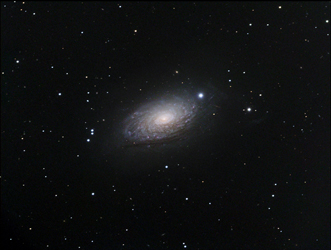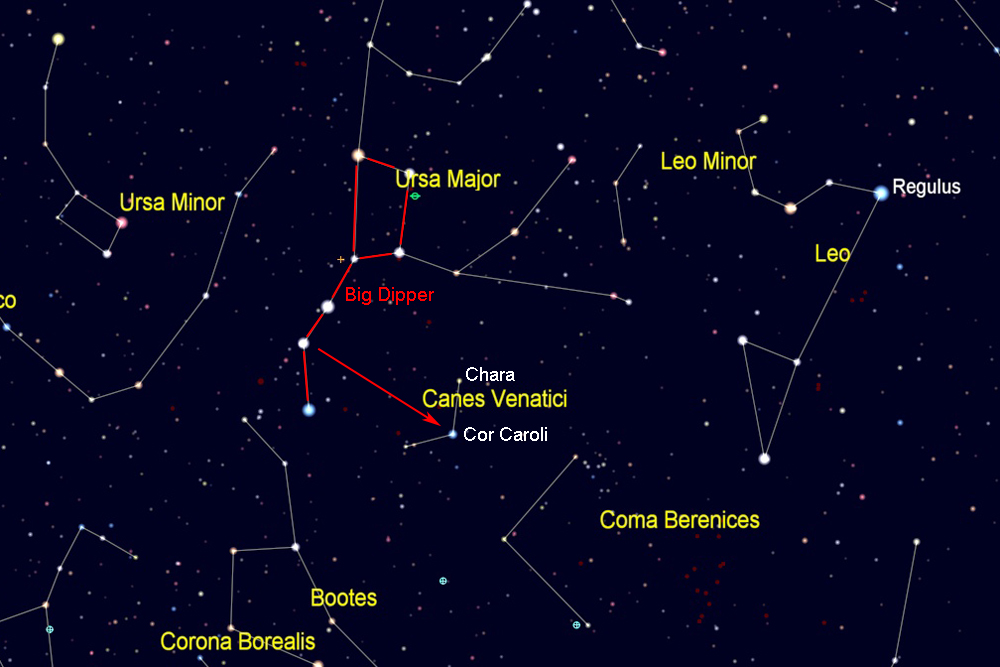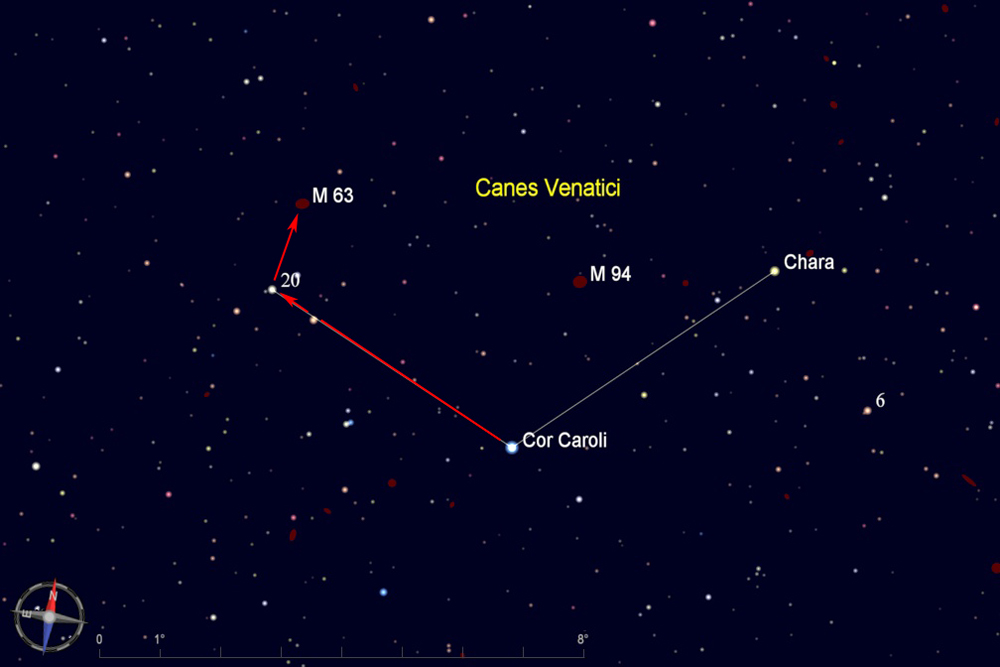| M63 is a bright galaxy, magnitude 8.6, and its diffuse oblong shape and stellar nucleus can be seen in even small telescopes. The many bright knots in its arms, surrounding a small and bright nucleus, give the Sunflower Galaxy its name. These tiny knots are difficult to see visually through a telescope, but the galaxy has a mottled appearance in large scopes. It is about 27 million light years away. |
. |
| Evening visibility: |
March-August |
| Best viewed with: |
telescope |
| |
Printable chart (pdf) |
View larger image |
Directions:
Start by finding the Big Dipper, one of the most recognizable star patterns in the sky. It is part of the constellation Ursa Major, the big bear. It is shown here on its side as it appears on early spring evenings. For other seasons and times of night rotate the chart as needed to match what you see in the northern sky. Then look "underneath" the curved handle of the Big Dipper for Cor Caroli, the brightest star in the small constellation Canes Venatici at magnitude 2.8. |
. |
| From Cor Caroli, move 5 degrees to the northeast to find the star 20 Canes Venatici (magnitude 4.7) which will be easy to see in a finderscope or binoculars. M63 is about 1.5 degrees to the north of this star. |
 |
| Star charts created with Cartes du Ciel |
| |
| |


